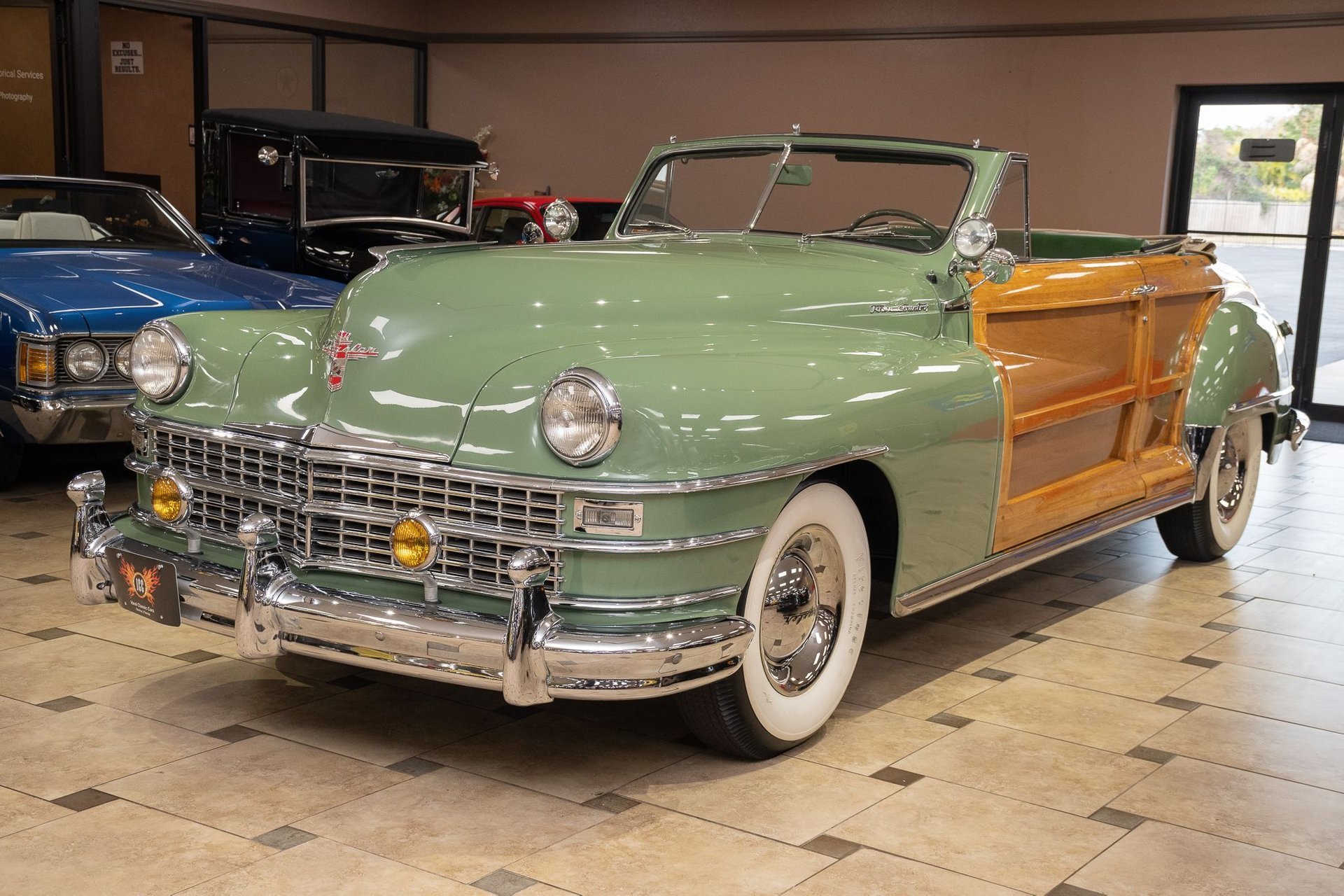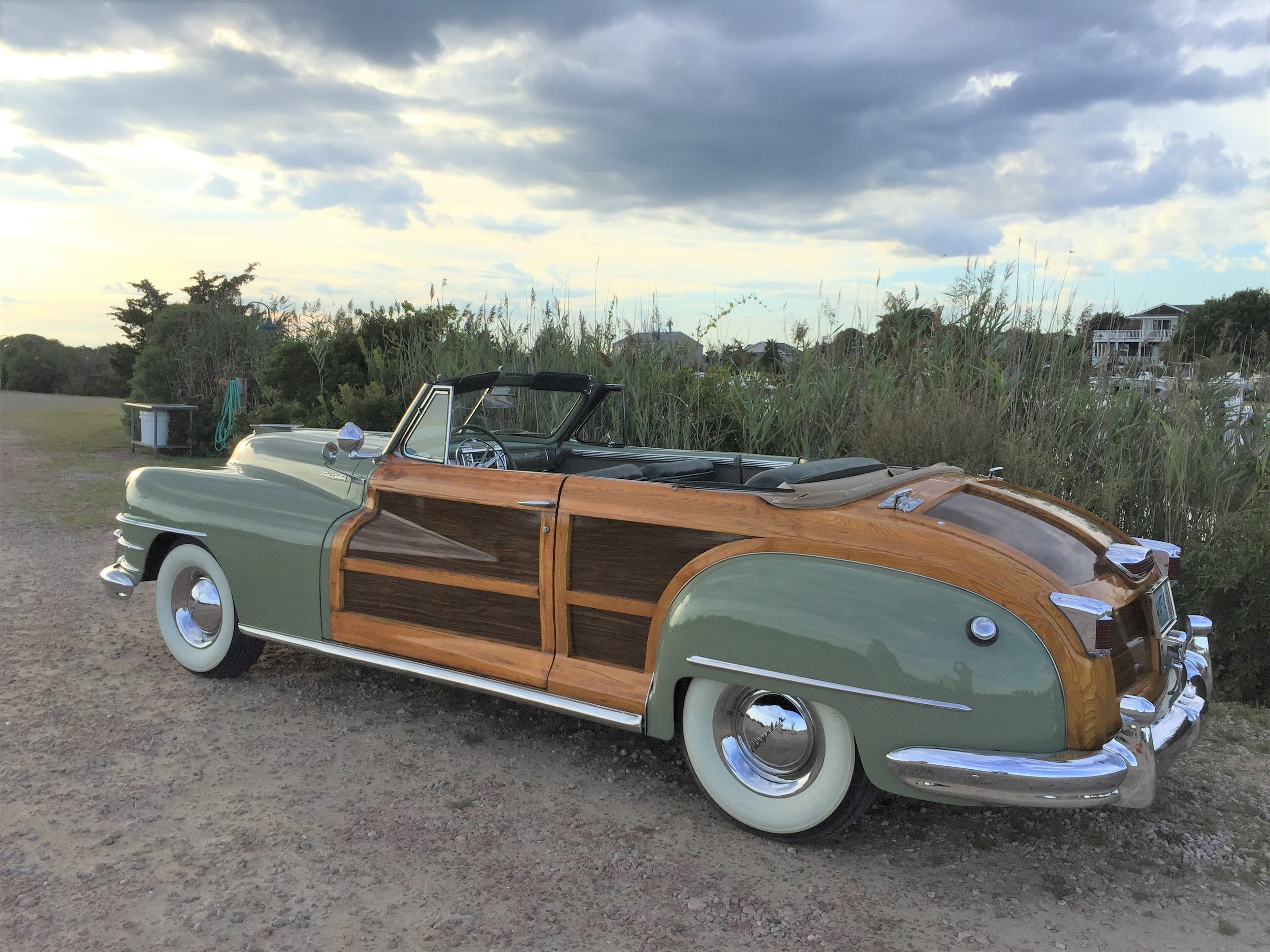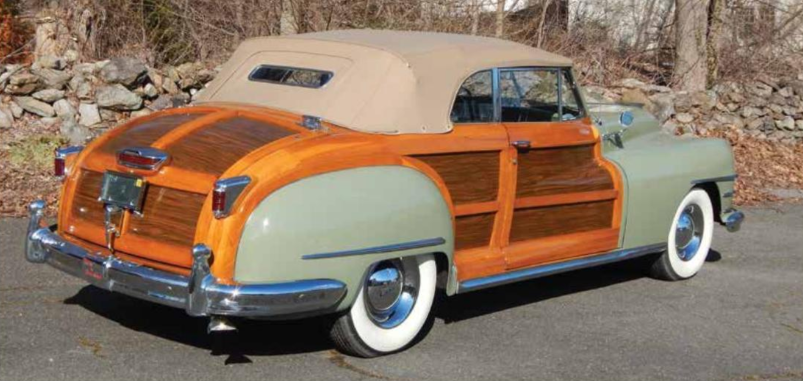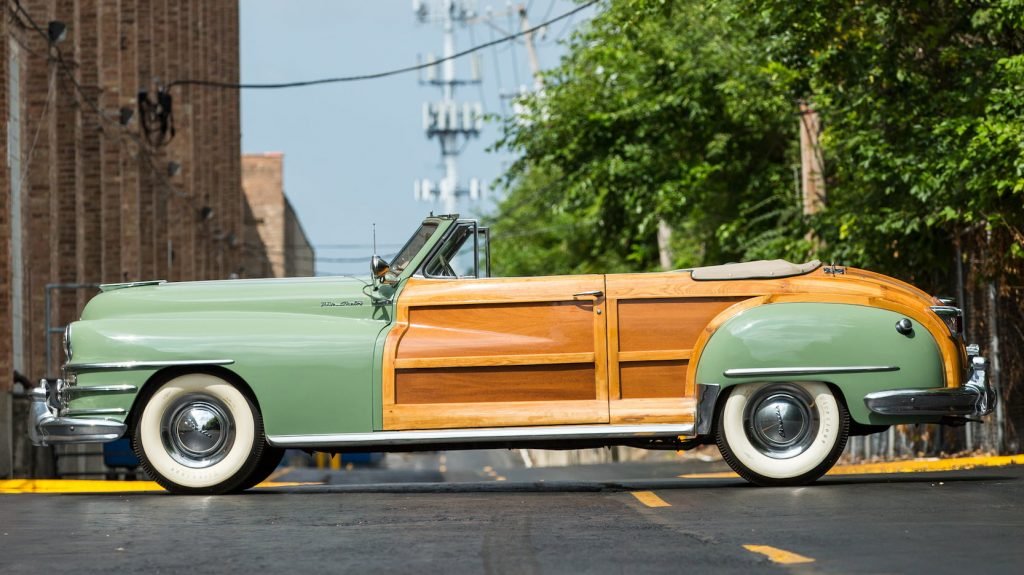1948 Chrysler Town & Country “Barrel Back” convertible
Generously lent by Quonset Motor Sport, LLC, and Jeff Gardner






Chrysler’s way of enhancing their pre-war cars for post-war use
Overlaying real wood onto a metal frame and chassis, alluding to tradition and luxury.
Helped pull Chrysler out of the depths of post-war distress.
The wood-bodied automobile as a fashion statement first became popular in the 1930s, but arguably it was Chrysler who perfected the woody formula in the 1940s. Chrysler was able to mold the woody imagery into a desirable luxury item, and this Town & Country Convertible is no different, representing the top of the Chrysler lineup and the peak of American luxury in 1948.
In the years following World War II, all car companies including Chrysler found it difficult to introduce an entirely new vehicle. Most ‘new’ vehicles at this time were carried over from the last cars the company built prior to the war, with slight design adjustments and engineering improvements. The woody line of vehicles was Chrysler’s method of introducing a new style of the vehicle while taking advantage of their older platforms.
With a business-like front end that transitions smoothly to a wooden body that is easy on the eyes, the Town & Country nomenclature was never more fitting than on a woody convertible. The combination of white ash framing the mahogany veneer creates a stylish and tasteful contrast. The ash framing was not just only used for exterior aesthetic appeal, as seen highlighting the door and trunk frames, even though these were wood panels laid over the steel body.
Building a line of woodies did not impact or slow down the Chrysler production line, though Chrysler woodies were expensive to produce and required attention and care to maintain. David Wallace was the president of Chrysler in this period, and at the same time stood as the president of Perkins Wood Products – the company that produced the paneling for all Chrysler woodies. Perkins provided the finished panels for Chrysler to install at their factory, and the Chrysler owner’s manual encouraged owners to varnish the wood panels every six months to protect against deterioration.
Immediately after World War II, there was not an American automobile company that transitioned as elegantly into the post-war period as Chrysler. Woody production lasted less than five years for Chrysler, but its impact was engrained in the global car community for decades and helped to cement Chrysler’s place as one of the great American automobile companies.
Specifications:
Engine: 5.3 Liter Inline-Eight Cylinder
Horsepower: 135 @ 3400 RPM
Transmission: Three-Speed Semi-Automatic, Fluid Drive
Weight: 4332 lbs.

